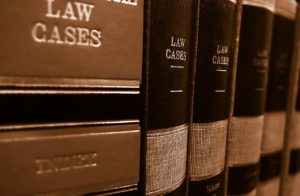Legislation and guidelines
Maximising your mitigation
In this two-part article, Eversheds Sutherland EHS Partner and Solicitor-Advocate Paul Verrico considers the actions which a duty-holder can take following a serious incident in which failings have been identified, to influence the size of penalty imposed upon it.

Paul Verrico
The views of the top legal minds in the country are showcased to consider where a corporate entity can properly demonstrate to a court that it has considered any failures, learned from them and that any incident is an isolated occurrence.
Never ruin an apology with an excuse – unknown
When the sentencing guideline was first mooted, practitioners up and down the land wondered aloud how there could be consistency in outcome; it is an often quoted (but true) maxim that each case turns on its own facts, the finances of each Defendant vary wildly and the gritty human tragedies which come before the courts have a huge range of root causes.
Analysing the final form guideline, it became apparent that the ability of an advocate to set out cogent submissions on the two main sentencing principles of culpability and harm would very much depend on the attitude of the defendant to safety culture and the maturity of systems in place both before and after an incident. By way of example, in a recent case a District Judge responded very favourably when sentencing a large organisation after considering the extent to which a safety management system had been embedded across a number of sites, including the incident site, evidenced by training records and risk management documents in the years immediately preceding the incident.
When preparing an argument for court, defence advocates have a weather eye on the extent to which the various factors reducing seriousness or reflecting mitigation which are listed in the sentencing guideline are present in the case. For those who have worked with a duty-holder from the time of an incident, there may have been opportunities to focus on achieving some of these to a greater extent than for advocates who are instructed immediately before a trial or a sentencing exercise.
By way of reminder, the mitigating factors listed in the guideline which a court should consider before finalising the penalty imposed include:
 Evidence of steps taken voluntarily to remedy a problem;
Evidence of steps taken voluntarily to remedy a problem;- High Level of co-operation with the investigation, beyond that which is reasonably expected;
- Good health and safety record;
- Effective health and safety procedures in place; and
- Acceptance of responsibility.
The purpose of this article is to ask some of the leading safety lawyers in the country what they think a duty-holder can do in the aftermath of a serious or fatal incident in order to ‘do the right thing’ and really emphasise those points of mitigation. Our panel of experts includes David Young, Partner at Eversheds Sutherland; Stephen Hockman QC, Head of Chambers at 6 Pump Court; Keith Morton QC, Head of Chambers at Temple Garden Chambers; John Cooper QC of Crown Office Chambers; Gerard Forlin QC of Cornerstone Barristers; Jason Pitter QC of New Park Court Chambers and Peter Smith of Deans Court Chambers.
Many companies are more concerned about the negative effect a conviction may have on publicity than they are on the size of a monetary fine. At the recent 2018 Eversheds Sutherland Health and Safety Summer School, Sarah O’Connor, an award-winning investigative journalist from the Financial Times reminded delegates that the most interesting stories ‘are where there is a real human element, where the public need to know that a company isn’t all it portrays itself to be. Those are the stories where we want to delve deeper and understand what’s gone wrong.’
Many advocates rely on industry awards and a good safety track record as reasons to reduce culpability-that the facts of the case for which the company is before the court for are ‘rare’ – so we asked the panel:
How does the way in which a company is perceived before an incident impact on the extent of regulatory scrutiny? (i.e. if a company is perceived to be a ‘good’ corporate citizen with a stellar reputation do they have a less rigorous external investigation?)

Stephen Hockman QC
Hockman QC
I would say that whilst on the one hand it will of course help any business to be perceived as a good corporate citizen and to have a stellar reputation, I am doubtful whether, if an incident has occurred, that business can reasonably expect any external investigation to be less rigorous. I think the purpose of maintaining good health and safety practices, and a good relationship with any relevant regulator, is to minimise the risk of such an incident occurring, rather than to achieve any special treatment if and when it does. No doubt it can also be said however that if health and safety matters have been properly attended to, a rigorous external investigation is likely to lead to a much less stringent outcome.
Forlin QC
“I do not think having a ‘good’ reputation effects directly the commencement or extent of any external Investigation, but it tends to greatly assist when before a court and can have a major impact on Sentencing. The opposite is of course true as a ‘bad character’ in the form of previous convictions or enforcement action can massively influence any trial or subsequent sentencing process.
“On a separate issue, I am aware that certain major Industry players feel that it is more likely that they will be investigated than if they were smaller in size and reputation as they perceive they will be exemplars and act as a deterrent for others in a similar Industry or sphere. They also think they are ‘being good for the costs’ in the event of conviction, guilty plea or fees for intervention.”

John Cooper QC
Cooper QC
“The Regulator will react to the nature of incident regardless of the reputation of a corporation. In my view a ‘stellar reputation’ for a high level of safety management will help during the currency of on investigation in that there may be a less aggressive approach and an awareness that generic documentation is likely to be in order. However, the outcome of any investigation is unlikely to be influenced by an historic level of good safety management.”
Morton QC
“Almost every company I have ever represented is ‘good’. I rather doubt that the general perception of a company has any significant bearing on the extent of an investigation. Certainly, it does not prevent investigation and prosecution of large companies which are objectively good and at the leading edge of devising and implementing safe working practices (large construction companies come to mind). That is so even where the immediate cause of an accident is acts or omissions of an individual contrary to training and established methods of working (on the basis, for example, that it is foreseeable people will act contrary to instructions). However, I am confident that judges and juries may be more easily swayed in favour of organisations that people in general are well disposed to because they are perceived to be ‘good’ companies in the public consciousness, even though they are very large commercial organisations.”

David Young
Young
“In my experience there is no correlation between an organisation with a ‘good’ reputation and the rigour of an external investigation, nor should there be. The place for a good reputation to be considered is as part of the public interest test once the regulator has satisfied the evidential test. Usually, however, good reputation ends up as part of the mitigation and is only a factor in sentencing.”
Pitter QC
“Whether or not a failing is truly ‘isolated’, whether as against general reputation, previous health and safety history or current working practices is one of the main considerations at each of the key stages of investigation, prosecution and sentence. However, it will always be secondary to the nature and seriousness of any breach, particularly in the eyes of investigators. That does not erode its significance. Therefore, whilst a ‘good’ corporate citizen, perceived generally in a positive light, may attract a degree of ‘goodwill’, particularly during sentence, that is limited unless it is allied with a good reputation so far as health and safety is concerned.”
 Smith
Smith
“In terms of how an organisation is regarded before an incident can cut both ways. Simply because an organisation is regarded as having a corporate moral compass, and a positive character does not deter a full and detailed investigation into all potential ‘risk’ bearing aspects of a business. Indeed, much can depend on the inspector and ultimately those who are instructed to represent them. Unfortunately, a form of ‘grandstanding’ and scalp taking is still present, though less obvious today.
“Having said that, with a ‘good corporate citizen’ there may be other reasons as to why a more thorough investigation is required. Hitherto, sound practices and procedures can lead to complacency. We know that not only has there to be devised a safe system of work, and all which that entails, but the responsible organisation must ensure that the system is being adhered to in every respect. This is a feature which we have all witnessed where a reputable company lets itself down. The corporate reputation pre-incident is vital however, as the thread to run through any mitigation.
We next turn to the question of victim support; in an age in which all stakeholders have a voice in the criminal process, we asked:
How does the manner in which an employer deals with the victim or, in the worst cases, the family of the deceased impact on the way a case is disposed of by the court?

Gerard Forlin QC
Forlin QC
“Being genuine, sensitive, timely and pragmatic is crucial for legal, reputational and some would say moral reasons. The immediate approach taken by a defendant in the aftermath of an incident or near miss often dictates the tone of all future proceedings including civil, criminal and the inquest.
“Further, in my experience, defendants often want to do the ‘right’ thing but are uncertain what and when to do something and how it will be perceived by others. This issue needs to be very carefully thought through by both the defendants and their legal advisors. The bereaved and injured also have the opportunity to produce impact statements before the court. These Statements are taken by the Regulators.”
Hockman QC
“I have found that these issues undoubtedly do make a difference in the sentencing process, even though they may not be decisive. In my experience, judges, especially high court judges, who deal with these cases are extremely sensitive to the feelings of the victim’s family, who are likely to be present in court. I remember one ‘fatal’ case before a high court judge in which I embarked upon a line of mitigation, comparing the case under consideration with another case which I suggested (on valid grounds) was more serious, but rapidly abandoned this line of argument on noticing the judge’s reaction (which I inferred from her facial expression even before she said anything)! No doubt she could see how the family were reacting to this which I from my vantage point could not.”
Cooper QC
“This is a critical area. A good corporation will, in any event, wish to treat the victim / family with the greatest respect and understanding. A good relationship with the victim / family can restrain an otherwise more vocal prosecutor and will reflect well with the way the case is run and the judge’s awareness of the company’s approach. In rare cases it may impact on whether there is a prosecution at all. The converse of the above is also true. A poor or unnecessarily challenging approach to a victim / family can have serious consequences following a conviction.”
Young
“If the employer engages as much and as positively as it is allowed by the victim or the family it does seem to weigh in the balance positively upon sentencing. Why would you not, as an employer, try to behave well after a workplace accident? In my experience employers do sometimes trip up here and ‘freeze’. Most explain it by reference to their insurers who will be dealing with any compensation claim but that is a misapprehension (that the employer cannot engage). In some cases, too, the use of victim personal statements seems to encourage criticism of an employer and the HSE can appear complicit in that.”
Morton QC
“Most prosecutors recognise the sensitivity faced by a defendant company in dealing with victims and families. Some want no contact with the defendant. Where the victim or family reject approaches or otherwise make clear an approach is not welcome this should be recorded in case it is later sought to present the defendant in a poor and uncaring light. Where, however, a company behaves badly this will be reflected in way the case is presented or may well be raised by the judge. In a recent case of mine the family’s victim statements set out a series of criticisms about the way they had been treated and the Judge began the hearing by asking me to address him on each allegation made. In that case there were good answers, but I have no doubt that had there not been that would have been reflected in both the sentence and the sentencing remarks.”

Jason Pitter QC
Pitter QC
“A word on the approach to victims and their families. It is often not given due consideration. A compassionate approach is demonstrative of the appropriate attitude to health and safety and protecting those affected by a company’s activities and can only assist when consideration is given to the approach to take it.”
Smith
“Dealing with victims and their families can be a delicate matter. Of course, the organisation who assist the victim and the family will benefit. The prosecution cannot go behind facts such as maintaining full pay, offering rehabilitation, keeping in contact with the victim and working with the Occupational Health Team if there is one. A real feature of mitigation which is linked concerns an admission of primary liability in any civil litigation to ease family concerns as to damages under various heads. Being pro-active can prove positive and be reflected in reducing a starting point.”
In the second part of this article, we look at ‘steps taken voluntarily to remedy a problem’ and whether a company’s reputation assists it in demonstrating a good health and safety record.
Maximising your mitigation
Eversheds Sutherland EHS Partner and Solicitor-Advocate Paul Verrico considers the actions which a duty-holder can take following a serious incident in which failings have been identified, to influence the size of penalty imposed upon it.
Paul Verrico
SHP - Health and Safety News, Legislation, PPE, CPD and Resources Related Topics
Company fined after worker crushed to death
Horticulture company fined after lorry driver suffers life changing injuries
Director jailed for failing to protect workers from asbestos exposure


 Evidence of steps taken voluntarily to remedy a problem;
Evidence of steps taken voluntarily to remedy a problem;


 Smith
Smith

Paul, nice article.
If a company cannot prove worker neglect, then they should only do one thing following a serious or even a non serious incident… Do ‘everything they can to prevent harm’ this will help in a reduction, as the duty holder can be seen to be doing so far as is reasonably practicable and the duty holders clients can also be shown the company failures were in the past in order to start re-building.